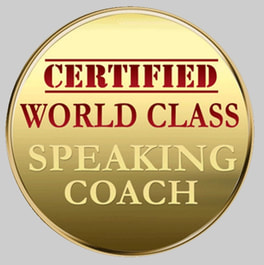
Have you ever sat down for a presentation and after a minute or so wondered what it the ultimate message was going to be?
This is not necessarily a bad thing, especially for those speakers who wish to inspire or entertain their audiences. A little suspense about your presentation can be enticing as long as your opening hook is strong enough. A powerful story is the best opener, as we have seen in Part 2.
For informative and persuasive speeches however it is important to follow your opening hook and gratuities by sharing with your audience what you hope to cover with your presentation… and of course what you hope your audience will gain from your speech…
There are two optional but powerful components that can achieve this. They only take one or two sentences, but they can result in a satisfying moment for your audience. Here they are:
The Road Map is a brief rendition of what you plan to deliver in the body of your speech. Think of it as the agenda. For your audience it’s illuminating, because they will understand what’s coming and when. A typical example of a Road Map is:
“First I will share a success story about our product with a famous company. Then I will list the most powerful benefits and results for you as a customer. And finally I will show you a demo of the product so you can get a feel for it in action.”
It’s so simple but, as an audience member, I will understand in a clear way what I can look forward to by continuing to listen to your presentation. But it doesn’t end there…
The Big Promise is one sentence that let’s your audience know what they will be able to think, feel and/or do differently as a result of listening to your presentation. A typical Big Promise begins with:
“So that by the end of this presentation you will…”
Depending on the purpose, message and major motive of your speech you may continue this sentence with something like:
“…be able to…”
“…have a clear picture of…”
“…become an expert in…”
“…understand how to…”
“…see the benefit of…”
“…understand the opportunity that I’m offering you…”
“…be persuaded to…”
Note that this is called a Big PROMISE, so make sure you deliver on that promise. As Mae West once said, “An ounce of performance is worth pounds of promises.”
Author: Eddie O'Hanlon
This is not necessarily a bad thing, especially for those speakers who wish to inspire or entertain their audiences. A little suspense about your presentation can be enticing as long as your opening hook is strong enough. A powerful story is the best opener, as we have seen in Part 2.
For informative and persuasive speeches however it is important to follow your opening hook and gratuities by sharing with your audience what you hope to cover with your presentation… and of course what you hope your audience will gain from your speech…
There are two optional but powerful components that can achieve this. They only take one or two sentences, but they can result in a satisfying moment for your audience. Here they are:
- The Road Map
- The Big Promise
The Road Map is a brief rendition of what you plan to deliver in the body of your speech. Think of it as the agenda. For your audience it’s illuminating, because they will understand what’s coming and when. A typical example of a Road Map is:
“First I will share a success story about our product with a famous company. Then I will list the most powerful benefits and results for you as a customer. And finally I will show you a demo of the product so you can get a feel for it in action.”
It’s so simple but, as an audience member, I will understand in a clear way what I can look forward to by continuing to listen to your presentation. But it doesn’t end there…
The Big Promise is one sentence that let’s your audience know what they will be able to think, feel and/or do differently as a result of listening to your presentation. A typical Big Promise begins with:
“So that by the end of this presentation you will…”
Depending on the purpose, message and major motive of your speech you may continue this sentence with something like:
“…be able to…”
“…have a clear picture of…”
“…become an expert in…”
“…understand how to…”
“…see the benefit of…”
“…understand the opportunity that I’m offering you…”
“…be persuaded to…”
Note that this is called a Big PROMISE, so make sure you deliver on that promise. As Mae West once said, “An ounce of performance is worth pounds of promises.”
Author: Eddie O'Hanlon


 RSS Feed
RSS Feed
